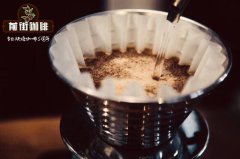Characteristics of Guatemalan Coffee Flavor Organic Sour and Sweet of Guatemala Atilan Coffee volcanic area

Professional coffee knowledge exchange More coffee bean information Please pay attention to coffee workshop (Weixin Official Accounts cafe_style)
Front Street-Introduction to Guatemala Attitlan
The Republic of Guatemala is referred to as Guatemala. It is a presidential republic in Central America, located in the south of the North American continent, northwest of Central America, bordering Mexico, Belize, Honduras and El Salvador in the west and north, the Gulf of Honduras in the Caribbean Sea in the east and the Pacific Ocean in the south.
Guatemala is one of the centers of ancient Indian Mayan culture. It became a Spanish colony in 1524. Independence was declared on September 15, 1821. Joined the Central American Federation in 1823. The Republic was founded in 1839. After a long period of dictatorship. The democratization process began in 1944, and from 1954, it entered the period of alternating right-wing military government and civilian government. In 1960, a left-wing military organization appeared. In 1982, the National Left Guerrilla merged to form the "National Revolutionary Union of Guatemala", and armed struggle spread all over the country. In December 1996, the Arzu government (National Pioneer Party) and the "National Revolutionary Union of Guatemala" reached the "Final Peace Agreement", ending 36 years of civil strife.
Guatemala has three world cultural heritages: Antigua Guatemala, Quirigua Archaeological Park and Mayan Cultural Site, Tikal National Park.
Attitlan:
One of Guatemala's four major volcanic coffee regions. The soil of Atidran is the most fertile of organic matter. Ninety percent of the coffee is grown along steep slopes that extend to Lake Etienne, the largest and most famous of Guatemala's volcanic lakes.
The coffee in this area is fragrant and has an intoxicating aroma. It tastes sour and sweet, and the coffee beans are full. The planting height is 5,000-5,600 feet (1,500-1,700 m). The soil in this area is volcanic ash and the climate is a large volcanic lake climate. Annual rainfall is approximately 72-92 inches (1,800-2,300 mm). The average annual temperature is 68-73 degrees Fahrenheit (20-23 degrees Celsius) and the relative humidity is 75%-85%.
The main drying methods in this area are sunlight and machine drying, and the shade trees are Grabiliella and Albizia species. Coffee varieties are bourbon, typical kadura, kadura. The production season in this area is from December to March of the next year.
Knowledge point: "Arabica" is not synonymous with good coffee, even Arabica varieties, which are also graded.
In brief: Qianjie is a coffee research center, happy to share knowledge about coffee with everyone, we share it without reservation only to let more friends fall in love with coffee, and there will be 3 low discount coffee activities every month, because Qianjie wants to let more friends drink the best coffee at the lowest price, which is also the purpose of Qianjie for 6 years!
END
Important Notice :
前街咖啡 FrontStreet Coffee has moved to new addredd:
FrontStreet Coffee Address: 315,Donghua East Road,GuangZhou
Tel:020 38364473
- Prev

The characteristic story of Costa Rican coffee producing area introduction to the flavor and taste of Costa Rican red honey coffee beans
For more information on coffee beans, please follow the Coffee Workshop (Wechat official account cafe_style) Costa Rica is a republic in Latin America bordering Panama and Nicaragua on the north and south of the country (both very famous coffee bean producing areas). Compared to most coffee in Africa
- Next

Standard of classification and classification of coffee beans in Guatemala planting history and different culture
Professional coffee knowledge exchange more coffee bean information please follow the coffee workshop (Wechat official account cafe_style) Front Street-Guatemala grading introduction Guatemala is located in Central America, which is a year-round rainforest weather, high humidity and warm climate country. Guatemala formed Central America with Nicaragua, El Salvador, Honduras, Costa Rica and Panama
Related
- Beginners will see the "Coffee pull flower" guide!
- What is the difference between ice blog purified milk and ordinary milk coffee?
- Why is the Philippines the largest producer of crops in Liberia?
- For coffee extraction, should the fine powder be retained?
- How does extracted espresso fill pressed powder? How much strength does it take to press the powder?
- How to make jasmine cold extract coffee? Is the jasmine + latte good?
- Will this little toy really make the coffee taste better? How does Lily Drip affect coffee extraction?
- Will the action of slapping the filter cup also affect coffee extraction?
- What's the difference between powder-to-water ratio and powder-to-liquid ratio?
- What is the Ethiopian local species? What does it have to do with Heirloom native species?

